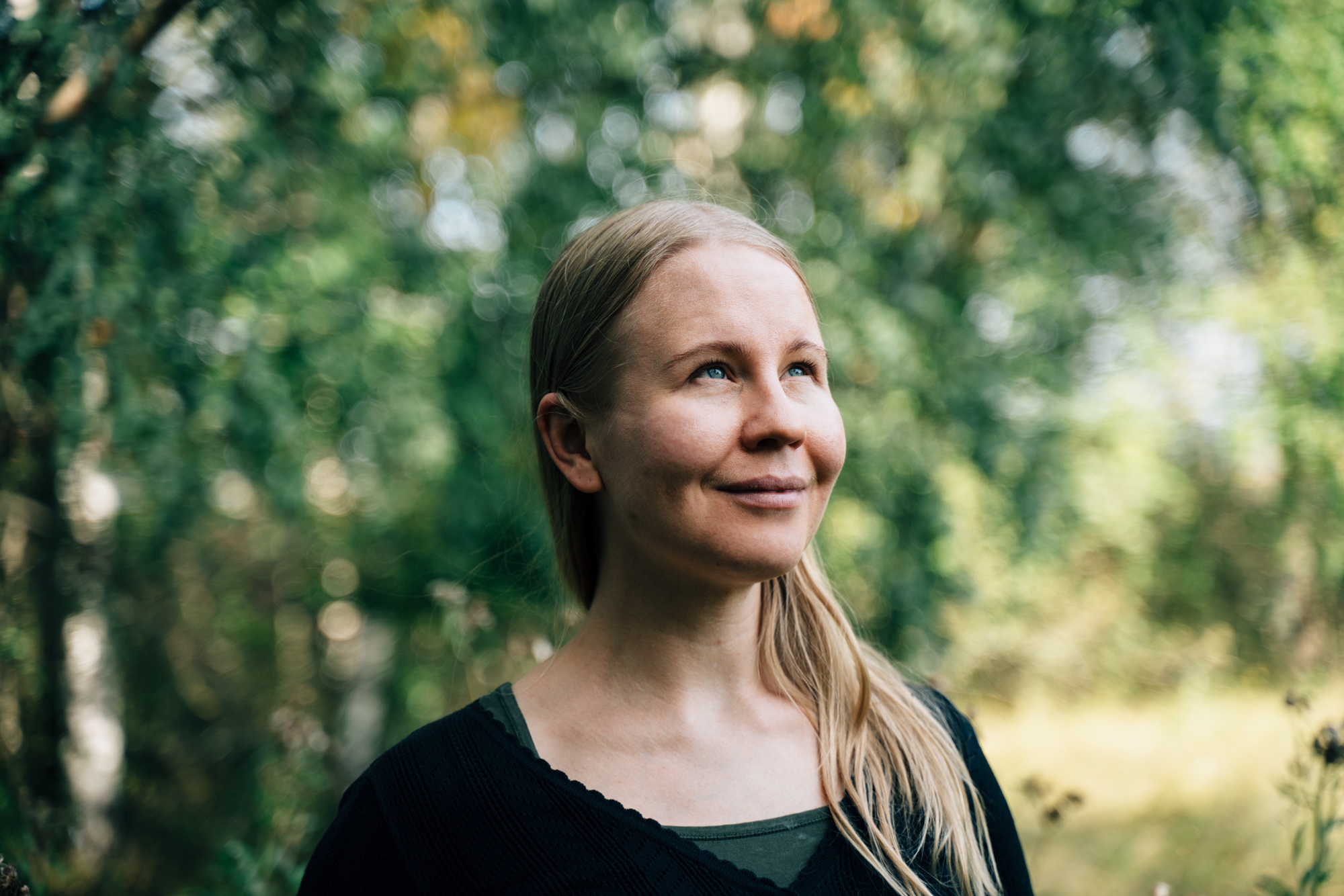The spring 2023 application period for the PoDoCo programme is open between 1.3.–15.4.2023. Henna Fabritius, who was admitted to the programme in spring 2019, is taking ecological information outside the academic world and developing tools at Plehat Oy for designers to model the natural environment with.
The article was first published 6.9.2019. Read more about the PoDoCo programme here.
Ecologist Henna Fabritius points at a tree branch and its leaves. They are swaying in the gentle summer evening breeze. The sun shines into her eyes through the foliage.
“Each tree has hundreds of leaves. Both trees and leaves have to be seen as individuals that are dependent on changes taking place in the landscape”, Fabritius explains.
What makes this situation peculiar is that the tree, leaves and wind are completely digital. The tree that Fabritius is pointing at grows in a 3D model of Uunisaari island, Helsinki. You enter the model with VR glasses. A controller lets you adjust the position of the sun as well as the amount of trees growing on the island.
How did someone with a PhD in Ecology end up talking about digital trees?
Henna Fabritius completed her PhD in Ecology at the University of Helsinki in 2015. In her doctoral thesis she studied metapopulation models, that is, the effect of habitat change on species. She is currently studying the spatial design of urban nature. Fabritius creates models that reveal where urban nature should be conserved and managed.
Fabritius was introduced to the virtual Uunisaari island at Plehat Oy’s office. Plehat, which specialises in landscape architecture and software, will be Fabritius’ place of employment for the next two years.

Making cities green with a visualisation tool
Plehat’s CEO Lauri Lemmenlehti and Fabritius met through a mutual acquaintance. Lemmenlehti had heard about the PoDoCo programme, which helps postdocs gain employment in companies, and sparked Fabritius’ interest in his company. The programme provides the opportunity for a two-year partnership, funded by the Nessling Foundation for the first year and Plehat for the second.
Plehat develops 3D visualisation tools for environmental design. The tools are borrowed from the video game industry.
“Environmental design is lagging behind digital development because modelling the natural environment is much more difficult than modelling buildings. You have to build interdependencies between vegetation and other landscape elements that haven’t previously been depicted with simulations”, Lemmenlehti says.
Fabritius’ task at Plehat is to ensure that Uunisaari island’s trees and other similar models are based on researched information. Fabritius believes that research-based visualisations support urban design that pays more attention to biodiversity.
“I want to be involved in creating tools that bring out the benefits of greening. Cities have a lot of dead surfaces where more substrates for various species could be created.”

The problem-solving skills of posdocs are an advantage for companies
Prior to her career as a researcher, Fabritius worked in telephone technology product development. The thought of jumping into the corporate world did not feel strange to her. Fabritius already knew she wanted to do applied research when she was applying for graduate school.
“The most important lesson from doctoral education is how it makes you think. We are skilled at questioning established beliefs and solving complex sets of problems. Companies are making more and more complex products and our way of thinking is beneficial in their development.”
Fabritius encourages her research colleagues to step outside the academic world.
“It is worthwhile to familiarise yourself with the business world, particularly if you are interested in solving societal problems.”
PoDoCo programme grants can be applied twice a year. Each year, the Nessling Foundation supports the employment of two postdocs in companies who are solving environmental challenges with their research.
Read also about Claudio Carletti’s PoDoCo journey here.
